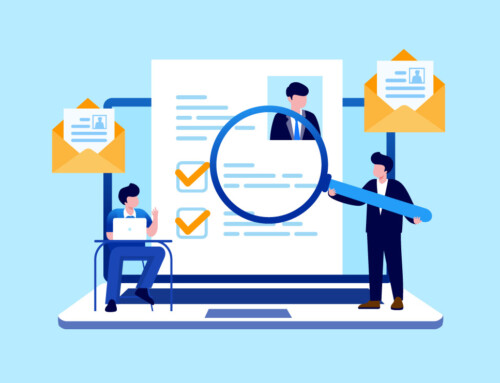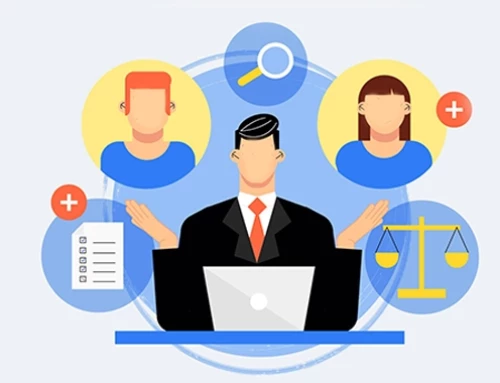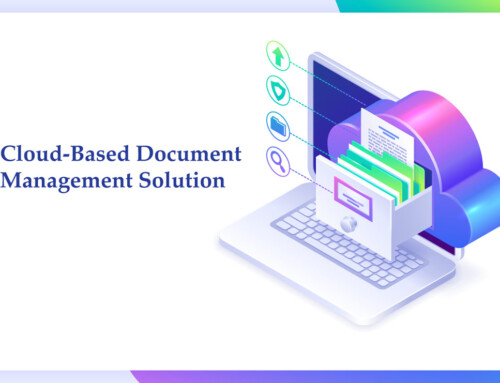Contents
Boost Law Firm Productivity: 10 Habits Lawyers Must Drop
Eliminating wasteful habits is part of streamlining legal practice and making it sustainable. Every change, from establishing boundaries to being well, directs the workflow in a better direction. Developing more productivity for law firms involves continuous focus on how time, energy, and resources are being utilized. By minimizing distractions and maintaining focus on critical tasks, the firm can build more law firm efficiency without exhausting workers or sacrificing customer service. These strategic shifts ultimately enable long-term prosperity and resilience in a competitive legal market.
Stop Saying “Yes” to Everything
I. Why Boundaries Are Key to Law Firm Efficiency
Saying yes to every request—whether from clients, colleagues, or opposing counsel—can quickly overwhelm even the most organized attorney. Without clear boundaries, time and energy are depleted on tasks that do not align with strategic goals. Establishing limits on availability and scope of work is not only essential for personal well-being, but also critical for law firm efficiency. Boundaries help ensure that every commitment supports the firm’s objectives rather than distracting from them. By being selective about engagements, attorneys can focus their expertise on where it adds the most value.
II. Simple Ways to Say No Without Burning Bridges
Turning down requests does not have to result in damaged relationships. Clear, respectful communication is key. A brief explanation paired with a referral, or an alternative can maintain goodwill while preserving time for priority work. For example, “My calendar is full this week, but I recommend you speak with [colleague’s name], who specializes in this area,” balances professionalism with boundary-setting. When used consistently, these practices help lawyers avoid overcommitment while maintaining strong networks and client rapport.
III. How to Prioritize Workload Without Guilt
Many lawyers feel pressure to accept all incoming tasks, fearing missed opportunities or client dissatisfaction. However, indiscriminate acceptance often leads to rushed work, burnout, and reduced law firm productivity. Using structured prioritization methods, such as the Eisenhower Matrix or ABC task ranking, allows for informed decisions about what truly requires attention. Delegation and automation further reduce the strain on individual practitioners, enabling a higher standard of service across the board. Ultimately, focusing on high-impact tasks leads to better outcomes for clients and the firm alike.

Stop Underestimating Task Time
I. The Law Firm Productivity Trap of Time Blindness
Underestimating how long tasks will take is a common yet avoidable cause of inefficiency in legal practice. Lawyers often fall into the habit of assuming that familiar activities—such as drafting a contract or preparing for a client meeting—can be completed quickly. However, unexpected details, interruptions, and client revisions frequently extend these timelines. This misjudgment creates a ripple effect that disrupts the entire schedule, causing delays and increasing stress. When repeated, this pattern significantly undermines law firm productivity by creating unnecessary backlogs and missed deadlines.
II. Building Realistic Schedules for Better Efficiency
Developing accurate time estimates begins with tracking how long specific tasks take over a consistent period. This historical data enables more informed planning and prevents the habitual compression of task duration. Allocating buffer time for contingencies ensures that schedules remain realistic and flexible. Adopting time-blocking techniques also helps structure the day around key priorities, minimizing the impact of distractions. By building schedules that reflect the real demands of legal work, firms can improve overall law firm efficiency and better serve their clients.
III. Tools to Track and Improve Time Estimates
Time-tracking software like RunSensible is an essential tool for identifying patterns in task duration and adjusting expectations accordingly. These platforms not only provide insight into personal work habits but also offer a broader view of team performance. Analytics derived from consistent tracking can highlight bottlenecks and areas for improvement. When used regularly, they help set more precise billing estimates and enhance transparency with clients. Over time, this leads to more consistent workloads, improved client satisfaction, and a reduction in the inefficiencies caused by chronic underestimation.
Stop Saving Important Work for the End of the Day
I. Harnessing Peak Energy for Peak Performance
Cognitive performance varies throughout the day, with most individuals experiencing higher focus and energy levels in the morning. When essential legal tasks are delayed until late in the day, they are often completed with diminished attention and accuracy. Complex activities such as legal research, contract drafting, and strategic planning require optimal mental clarity. Scheduling these responsibilities for the beginning of the workday enhances performance and output quality. This practice directly supports law firm productivity by aligning critical work with periods of peak cognitive efficiency.
II. Morning Routines for Lawyers That Actually Work
Establishing a consistent and intentional morning routine prepares the mind for high-focus work. Starting the day with a review of top priorities, free from email distractions or non-urgent communications, sets a productive tone. Incorporating time for focused work blocks immediately after routine administrative tasks ensures that important matters receive full attention before the day becomes reactive. Even brief planning sessions can make a significant difference in how efficiently lawyers transition into deep work. A purposeful start allows for uninterrupted progress on key deliverables early in the day.
III. Time Blocking for Law Firm Efficiency
Time blocking is an effective method for structuring the workday around intentional priorities. This approach involves assigning specific blocks of time to distinct categories of work, such as client communication, case research, and document drafting. By isolating focused work from reactive tasks, attorneys can reduce context-switching and maintain deeper engagement with substantive matters. Regular time audits help refine these blocks based on actual effort required, increasing precision in planning. Implementing time blocking across teams also facilitates better coordination and enhances law firm efficiency by minimizing overlap and redundancy.
Stop Serving Difficult Clients
I. Identifying Clients Who Hurt Law Firm Productivity
Not all clients contribute equally to a law firm’s success. Some clients, due to unreasonable expectations, frequent disputes, or chronic delays, can significantly disrupt workflows. These clients often require disproportionate attention, draining time and focus from high-value cases. Recognizing the patterns that signal a problematic client—such as excessive micromanagement or resistance to legal advice—is essential. Proactively managing or declining such relationships is critical for protecting law firm productivity and ensuring that resources are allocated to clients who align with the firm’s values and capabilities.
II. Red Flags During Legal Client Intake
The client intake process offers a valuable opportunity to assess compatibility and filter out high-risk engagements. Indicators such as vague goals, frequent switching between lawyers, or an unwillingness to follow established procedures should not be ignored. Standardizing the intake process with structured forms and clear criteria helps uncover these issues early. Additionally, including a consultation stage allows the attorney to evaluate the client’s communication style and expectations. By incorporating these safeguards, firms reduce the likelihood of taking on clients who hinder operations and increase tension.
III. Offboarding Clients Respectfully and Strategically
Disengaging from an unsuitable client must be handled with both professionalism and legal diligence. This includes reviewing contractual obligations, ensuring that all required services have been completed, and communicating the decision in writing. Providing referrals to alternative counsel can help ease the transition and preserve the firm’s reputation. A strategic offboarding process also allows the firm to conduct a post-engagement analysis, identifying lessons and refining intake policies. In doing so, the firm strengthens its long-term position and contributes to improved law firm efficiency through more balanced client management.
Stop Overcomplicating Marketing and Business Development
I. Streamlining BD to Improve Law Firm Efficiency
Many law firms invest substantial time and resources into marketing and business development strategies that are overly complex or misaligned with their actual goals. Lengthy approval cycles, inconsistent messaging, and unclear return on investment can reduce the effectiveness of even well-funded campaigns. Simplifying these efforts—by focusing on a few high-performing channels and leveraging templates or automation tools—can lead to faster execution and clearer outcomes. Streamlining processes allow firms to respond more quickly to opportunities and align efforts with core practice strengths, ultimately improving law firm efficiency and competitiveness.
II. Tactics That Actually Attract Clients Without Wasting Time
Effective business development does not require elaborate strategies. Consistent thought leadership, targeted networking, and a professional online presence are often sufficient to build a strong pipeline. Publishing client-focused articles, maintaining updated practice area pages, and participating in relevant events can build credibility over time. When combined with clear messaging and measurable goals, these tactics ensure that efforts are not wasted on initiatives with little strategic value. Clarity in execution helps legal teams avoid distractions and focus on efforts that lead to sustainable growth.
III. Automating Law Firm Marketing Efforts
Automation plays a crucial role in making marketing efforts scalable without increasing workload. Tools for email campaigns such as RunSensible, lead tracking, and social media scheduling allow firms to maintain regular outreach without manual input. This reduces administrative overhead and ensures that prospects receive timely, relevant content. Automation also provides data for evaluating campaign performance, enabling continuous refinement. By minimizing manual processes and maximizing reach, automation supports long-term law firm productivity by allowing attorneys and staff to focus on billable work and client service.
Stop Reacting and Start Planning
I. Daily Planning Habits That Drive Law Firm Productivity
Reactive work habits—responding to emails as they arrive, jumping between tasks without clear direction—fragment attention and undermine performance. Developing daily planning routines is essential for maximizing law firm productivity. Each morning should begin with a review of ongoing matters, priority tasks, and time-sensitive obligations. This review helps attorneys allocate their time intentionally, avoiding the inefficiencies caused by constant context-switching. A structured plan not only increases focus but also enables faster progress on complex legal work, resulting in improved outcomes and reduced stress.
II. Weekly Reviews to Stay on Track
In addition to daily planning, weekly reviews offer a broader perspective on workload and performance. Setting aside time at the end of each week to evaluate progress, reassess goals, and adjusting upcoming tasks create continuity and ensure that priorities remain aligned with firm objectives. During these reviews, attorneys can identify bottlenecks, anticipate upcoming deadlines, and adjust resource allocation accordingly. This practice promotes accountability and reduces the risk of surprises, enabling smoother operations and more predictable results.
III. Systems Thinking for Sustainable Efficiency
Implementing planning practices across the organization requires a system-oriented mindset. Rather than treating tasks and deadlines in isolation, firms benefit from understanding how various functions—case management, billing, client communication—interact. A systems approach allows firms to standardize processes, improve coordination, and reduce inefficiencies caused by miscommunication or duplication of effort. When systems are thoughtfully designed and maintained, they support long-term law firm efficiency by making workflows more reliable and easier to scale. Institutionalizing planning across departments enhances resilience and positions the firm for consistent growth.
Stop Avoiding the Sales Side of Legal Work
I. Mindset Shift: Lawyers as Legal Problem-Solvers and Sellers
Many attorneys resist the concept of sales, viewing it as incompatible with the legal profession. However, business development is fundamentally about understanding client needs and offering effective legal solutions. Reframing sales as an extension of client service can help lawyers embrace their role in firm growth. By positioning themselves as problem-solvers who offer tailored legal strategies, attorneys can build stronger relationships and demonstrate value. This perspective enhances law firm productivity by aligning outreach efforts with the delivery of real solutions, rather than superficial promotion.
II. Building a Client-Focused Sales Process
A structured, client-focused approach to sales allows firms to generate new business while maintaining professional integrity. This includes defining ideal client profiles, mapping the buyer’s journey, and preparing tailored pitches or proposals. Consistent follow-ups, outcome-based discussions, and transparent pricing foster trust and encourage long-term engagement. Equipping attorneys with training in consultative selling techniques helps standardize the process across the firm. This not only improves individual effectiveness but also contributes to organizational growth and sustainability.
III. Ethical Selling That Builds Trust and Revenue
Legal sales must adhere to ethical standards and align with client interests. This means focusing on building genuine rapport, listening actively, and recommending only services that address the client’s actual concerns. Clear, honest communication throughout the engagement process builds credibility and reduces friction. Firms that adopt this approach benefit from more referrals, stronger client retention, and enhanced reputation. Over time, ethical selling contributes to law firm efficiency by reducing time spent on low-fit leads and enabling staff to concentrate on high-value, aligned engagements.
Stop Letting Fear of Failure Drive Decisions
I. How Fear Destroys Law Firm Productivity
Fear of failure can cause hesitation, over-analysis, and missed opportunities. In legal practice, this often manifests as reluctance to innovate, overreliance on traditional methods, or resistance to delegation. When attorneys delay decisions or avoid taking strategic risks, progress slows, and morale suffers. This cautious approach undermines law firm productivity by allowing uncertainty to override execution. Addressing this fear requires a cultural shift that supports learning from mistakes and views setbacks as part of professional development rather than as threats to competence.
II. Learning from Setbacks without Losing Confidence
Setbacks are inevitable in any profession, but how a firm responds determines whether those experiences become obstacles or assets. Conducting structured debriefs after lost cases or failed initiatives helps extract actionable lessons and prevent repeat issues. Encouraging open discussion about challenges within the team reinforces resilience and creates an environment where improvement is continuous. Over time, this mindset reduces the stigma around failure and equips legal professionals to respond more quickly and effectively to adversity.
III. Creating Resilient Practice Through Risk-Taking
Calculated risk-taking is essential for growth in a competitive legal market. This includes adopting new technologies, entering new practice areas, or refining client service models. While not every initiative will succeed, experimentation provides insight into what works and what does not. Firms that reward thoughtful innovation are more likely to attract talent and adapt to changes in client expectations. By fostering a culture that balances caution with ambition, firms can strengthen law firm efficiency and sustain long-term momentum.
Stop Ignoring Your Health
I. Physical Wellness and Law Firm Efficiency
Physical health directly influences the cognitive function, energy levels, and stamina required for legal work. Long hours, high stress, and sedentary routines can degrade performance over time, leading to fatigue and increased error rates. Incorporating wellness practices—such as regular exercise, adequate sleep, and proper nutrition—supports sustained focus and decision-making. Firms that encourage these habits experience fewer absences, lower turnover, and higher staff engagement. By promoting physical well-being at every level, firms strengthen law firm efficiency through healthier, more resilient professionals.
II. Managing Stress in a High-Stakes Profession
Legal practice involves complex cases, strict deadlines, and frequent high-pressure situations. When unmanaged, stress becomes a barrier to performance and can escalate into burnout. Proactive stress management techniques—such as mindfulness training, scheduled breaks, and access to support resources—are necessary to maintain mental clarity and emotional regulation. Leadership plays a critical role in modeling these practices and integrating them into firm culture. A commitment to mental health not only safeguards individual well-being but also enhances the quality of legal service provided to clients.
III. Work-Life Balance Strategies That Stick
Work-life balance should be treated as a structural component of firm operations, not just a personal goal. This includes setting boundaries around after-hours work, offering flexible scheduling, and encouraging time off. Systems such as workload sharing, automated reminders, and realistic case timelines support balanced schedules and reduce overextension. When balance is embedded in firm practices, attorneys and staff are more likely to sustain high performance over the long term. These outcomes lead to greater law firm productivity and improved client relationships, driven by a more focused and energized team.
Stop Obsessing About the Future
I. Mindfulness as a Tool for Law Firm Productivity
Excessive focus on long-term uncertainties can distract from the immediate tasks that drive meaningful progress. While strategic planning is important, constant concern about future outcomes often leads to indecision and anxiety. Practicing mindfulness—maintaining present-moment awareness without judgment—enables attorneys to engage more fully with their work. Techniques such as focused breathing, short reflection breaks, or mindful transitions between tasks help reduce cognitive overload. By remaining present and grounded, legal professionals can complete tasks with greater clarity, directly supporting law firm productivity through enhanced concentration and reduced stress.
II. Focusing on Daily Wins Over Big Unknowns
Daily achievements, even small ones, are the building blocks of long-term success. Shifting attention from distant goals to daily objectives allows legal professionals to maintain momentum and measure progress meaningfully. This approach fosters a sense of accomplishment, which boosts motivation and morale. Tracking short-term deliverables and recognizing incremental wins keep teams aligned and focused. Emphasizing present-focused performance over abstract outcomes also helps maintain control in dynamic or uncertain situations.
III. Grounding Legal Work in the Present Moment
Anchoring legal tasks in the present context improves quality and efficiency. Whether preparing for a hearing or reviewing documents, full attention ensures fewer mistakes and more informed decisions. Training staff to manage distractions and to fully engage with the current problem enhances the standard of client service. Workflows designed around this focus—such as minimizing multitasking and using structured agendas—create space for deep work and reduce task-switching costs. These methods contribute to law firm efficiency by fostering deliberate, uninterrupted engagement with high-value activities.
Integrating These Habits into Your Law Firm’s Workflow
I. Change Management in Small and Solo Practices
Introducing new behavioral habits requires thoughtful change management, especially in small or solo law firms where roles often overlap. A structured transition plan, supported by clear goals and regular checkpoints, ensures that new habits are not only adopted but also sustained over time. Open communication about the purpose behind each change helps reduce resistance and align team efforts. By embedding these habits into standard operating procedures, firms can gradually shift culture without disrupting core functions. This approach supports law firm productivity by making improvements systematically rather than sporadic.
II. Role of Leadership in Sustaining Efficiency Gains
Leadership plays a central role in reinforcing behavior change and setting expectations. When firm leaders’ model positive habits—such as effective time management, proactive planning, and client prioritization—they establish a framework for accountability and shared standards. Regular performance discussions and transparent metrics allow for progress tracking and timely course correction. Leaders should also provide training and resources that equip staff with the tools needed to implement new workflows. By promoting consistency and support from the top down, firms create an environment that nurtures law firm efficiency and long-term growth.
III. Tracking Progress Without Micromanaging
Monitoring habit adoption and performance outcomes is critical, but it must be done in a way that respects autonomy. Using technology to gather insights—such as project dashboards, time-tracking tools, and client feedback systems—enables firms to assess impact without overreaching. Regular review sessions focused on metrics, rather than individuals, maintain focus on improvement rather than fault-finding. These practices ensure that progress is measurable, sustainable, and aligned with the firm’s broader objectives. Ultimately, such systems foster an efficient workflow that supports both accountability and professional development.
Drop the Dead Weight, Boost the Results
Law firms striving for long-term success must recognize that productivity is not just about doing more—it’s about doing the right things. Eliminating unproductive habits allows attorneys to focus on the work that truly matters: high-impact tasks, client service, and strategic growth. When legal professionals adopt structured routines, set boundaries, and embrace mindful decision-making, they remove common obstacles that drain time and energy. These behavioral changes are foundational to enhancing law firm productivity in a way that is both sustainable and scalable.
Equally important is the shift toward systemic improvements that embed these habits into the firm’s daily operations. Leaders who prioritize planning, support wellness, and foster a culture of accountability create environments where law firm efficiency can thrive. Integrating better workflows, smarter client selection, and realistic scheduling practices leads to higher quality work and reduced burnout. The result is a legal practice positioned not only for profitability but also for resilience in a competitive landscape.
Take Control of Your Time with RunSensible
Ready to eliminate the inefficiencies slowing down your legal practice? RunSensible offers an all-in-one platform designed to enhance law firm productivity and streamline every aspect of your workflow. From automated client intake and integrated calendaring to document management and e-signatures, RunSensible simplifies daily operations without sacrificing control or compliance.
Whether you’re managing a solo practice or a growing team, our tools are built to support law firm efficiency on a scale. With seamless communication features, built-in CRM, and customizable automation, RunSensible empowers legal professionals to focus on what they do best—serving clients. Start your journey toward a more organized, profitable, and future-ready firm today.
FAQs
1. What is the difference between law firm productivity and efficiency?
Law firm productivity refers to the volume of work completed, such as the number of cases handled, or documents filed. In contrast, law firm efficiency measures how effectively time and resources are used to complete that work. A productive firm may get a lot done, but an efficient one gets it done with minimal waste and maximum impact.
2. How can law firms measure productivity accurately?
Tracking billable hours is a traditional method, but to measure law firm productivity effectively, firms should also monitor task completion rates, turnaround times, and client satisfaction. Using performance metrics across different roles helps identify strengths and areas for improvement.
3. Why is time management critical for law firm efficiency?
Effective time management ensures that lawyers and staff focus on high-value tasks instead of low-priority distractions. When time is structured and tasks are prioritized, law firm efficiency improves through better output quality and reduced overtime or bottlenecks.
4. What role does client selection play in law firm productivity?
Choosing the right clients helps maintain focus and avoid unnecessary complications. Difficult or misaligned clients often consume more resources without proportional return, negatively impacting law firm productivity and team morale.
5. How does automation impact law firm efficiency?
Automation reduces the need for repetitive manual tasks, such as data entry, appointment scheduling, and follow-up emails. This not only frees up time for more complex legal work but also enhances law firm efficiency by minimizing human error and standardizing workflows.
References:
- http://www.estateably.com/blog/10-tips-to-improve-your-law-firms-productivity
- http://www.leanlaw.co/blog/transformed-5-jaw-dropping-case-studies-in-law-firm-efficiency
- http://www.beaconlive.com/blog/law-firm-efficiency
- http://speakwrite.com/blog/law-firm-efficiency
- http://www.peakoutsourcing.com/blog/how-to-improve-law-firm-efficiency
- http://blog.lexcheck.com/law-firm-efficiency
Disclaimer: The content provided on this blog is for informational purposes only and does not constitute legal, financial, or professional advice.







